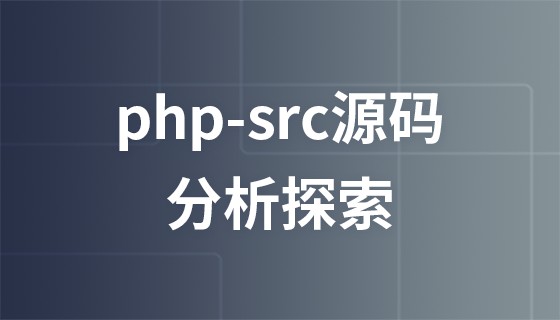golang配置性能分析工具的核心步骤是集成pprof并生成火焰图以定位性能瓶颈。1. 导入net/http/pprof包并在main函数中启动http服务,用于访问性能数据;2. 运行程序后,访问/debug/pprof/接口收集cpu、内存、goroutine等数据;3. 使用go tool pprof结合flamegraph生成火焰图,通过svg文件可视化调用栈和性能消耗;4. 通过分析堆内存和goroutine数据,使用top、allocs、list等命令排查内存泄漏和协程泄漏;5. 在生产环境中限制pprof访问权限、禁用非必要接口、定期收集数据,并结合远程监控工具降低性能开销。

Golang配置性能分析工具,核心在于集成
pprof

pprof 是 Go 自带的性能分析工具,可以分析 CPU 使用情况、内存分配、阻塞调用等。火焰图则是 pprof 数据的可视化方式,能够更清晰地展示调用关系和性能消耗。

导入 net/http/pprof
main.go
net/http/pprof
立即学习“go语言免费学习笔记(深入)”;
import _ "net/http/pprof"
import "net/http"
import "log"
func main() {
go func() {
log.Println(http.ListenAndServe("localhost:6060", nil))
}()
// 你的程序逻辑
}这段代码会在
localhost:6060
import _ "net/http/pprof"

运行你的程序: 确保你的程序在运行状态。
收集 pprof 数据: 打开浏览器,访问
http://localhost:6060/debug/pprof/
cpu
heap
goroutine
生成火焰图: 生成火焰图需要先安装
go tool pprof
FlameGraph
安装 go tool pprof
go install github.com/google/pprof/cmd/pprof@latest
安装 FlameGraph: FlameGraph 是一个 Perl 脚本,用于生成火焰图。 你需要先安装 Perl,然后从 GitHub 上下载 FlameGraph:
git clone https://github.com/brendangregg/FlameGraph.git
分析 CPU 使用情况并生成火焰图:
go tool pprof http://localhost:6060/debug/pprof/profile?seconds=30 > cpu.pprof go tool pprof -proto cpu.pprof > cpu.proto ./FlameGraph/flamegraph.pl cpu.proto > cpu.svg
go tool pprof http://localhost:6060/debug/pprof/profile?seconds=30 > cpu.pprof
cpu.pprof
go tool pprof -proto cpu.pprof > cpu.proto
./FlameGraph/flamegraph.pl cpu.proto > cpu.svg
打开
cpu.svg
内存泄漏是 Go 程序中常见的问题,可以通过 pprof 分析堆内存使用情况来定位。
收集堆内存数据: 访问
http://localhost:6060/debug/pprof/heap
go tool pprof http://localhost:6060/debug/pprof/heap > heap.pprof
分析堆内存数据: 使用
go tool pprof
heap.pprof
go tool pprof heap.pprof
进入 pprof 的交互式界面后,可以使用以下命令:
top
allocs
inuse_space
inuse_objects
web
通过分析这些数据,可以找到内存泄漏的根源。 例如,如果某个函数分配了大量的内存,但没有及时释放,那么就可能存在内存泄漏。
使用 go test -memprofile
go test -memprofile memprofile.out go tool pprof memprofile.out
这个命令会运行单元测试,并将内存分配数据保存到
memprofile.out
go tool pprof
Goroutine 泄漏是指程序中创建了大量的 Goroutine,但没有及时退出,导致资源耗尽。
收集 Goroutine 数据: 访问
http://localhost:6060/debug/pprof/goroutine
go tool pprof http://localhost:6060/debug/pprof/goroutine > goroutine.pprof
分析 Goroutine 数据: 使用
go tool pprof
goroutine.pprof
go tool pprof goroutine.pprof
在 pprof 的交互式界面中,使用
top
分析调用栈: 使用
list
在生产环境中使用 pprof 需要注意安全性问题,避免暴露敏感信息。
限制访问权限: 只允许授权用户访问 pprof 接口。 可以使用 HTTP 认证或者 IP 地址白名单等方式限制访问权限。
禁用不必要的接口: 只启用必要的 pprof 接口,例如 CPU 和内存分析接口。 可以禁用其他接口,例如命令行执行接口,以防止恶意攻击。
定期收集数据: 定期收集 pprof 数据,例如每隔一段时间收集一次 CPU 和内存数据,并将数据保存到文件中。 这样可以在出现问题时,快速定位问题。
使用远程分析工具: 可以使用远程分析工具,例如 Prometheus 和 Grafana,收集和展示 pprof 数据。 这样可以方便地监控程序的性能,并及时发现问题。
考虑性能影响: pprof 本身也会带来一定的性能开销,特别是在高并发场景下。 可以通过调整采样频率和采样时间来降低性能开销。 也可以考虑使用其他的性能分析工具,例如
perf
eBPF
以上就是Golang如何配置性能分析工具 集成pprof与火焰图生成环境的详细内容,更多请关注php中文网其它相关文章!




Copyright 2014-2025 https://www.php.cn/ All Rights Reserved | php.cn | 湘ICP备2023035733号